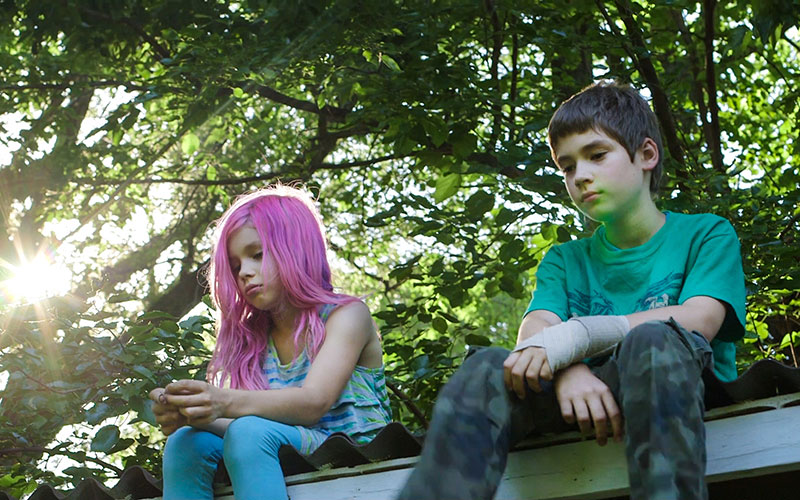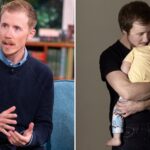Blog Post
The Tragedy of Transhood
This article was first published at First Things.
By Jonathon Van Maren
The fight to legalize same-sex marriage in America was a decades-long culture war. The transgender revolution has been an overnight blitzkrieg. In less than a decade, the Democratic party, the media, the entertainment industry, and much of academia have thrown their weight behind the transgender agenda, and this has profoundly changed childhood. There was once girlhood or boyhood. Now, as director Sharon Liese highlights in a new HBO Max documentary, there is also “transhood.”
Transhood follows the families of four gender-confused children in Kansas City over five years. It is presented as a beautiful story of children exploring their gender identity in an evolving culture. But what it actually showcases is the tragedy unfolding in homes across America as the rates of children and teens who claim they are “trapped” in the wrong gender—and then socially or medically “transition,” often with the support of their parents—skyrocket. A few years ago, .002–.003 percent of girls in the U.S. identified as transgender; now, that number is 2 percent and rising fast. And much of the harm being done to young people via puberty blockers and hormones—which cause infertility and damage vocal cords, reproductive organs, and bone density—is irreversible.
Studies show that over 80 percent of children with gender dysphoria grow out of it and become comfortable in their own bodies. But these days, they only get that chance if the trans movement doesn’t get to them first. Consider the film’s portrayal of seven-year-old Avery Jackson, who cannot explain why he decided to identify as a girl at the age of four. “I just started dressing like a girl, and everyone didn’t like it.” His mother Debi jumps in to note that Avery had insisted he was a girl. Debi, we learn, has become a trans activist. She informs Avery that he’s going to be the author of a transgender awareness book. “Pretty cool,” he says unenthusiastically.
Avery is so obviously boyish that Debi feels the need to explain. “I just happen to have a tomboy trans-girl,” she says. “She was assigned male at birth.” She assures the filmmaker that thus far, this is only a social—not a medical—transition: long hair, female clothes, pronouns. Debi has gone all-in on it. First, she told his story anonymously to a newspaper. Then, she gave a speech about Avery that went viral. “She was very proud of being transgender,” says Debi.
If that’s true, Avery doesn’t say so. A photographer from National Geographic shows up, and Avery yells at his mother: “You put me in everything! I don’t approve of it!” Debi tells him she’s arranged for him to be the grand marshal of a gay pride parade and asks if he still wants to do it. “I don’t want the parade,” says Avery. “I don’t wanna die.” Debi admits that her parents—Avery’s grandparents—are concerned that she is using Avery for fame and attention. They’re worried that Avery will never be able to change his mind and live as a boy later on because his mother has put him on a public pedestal.
Avery ends up on the cover of the 2017 National Geographic issue “The Gender Revolution.” But by the end of the film, the transgender cover child has had enough of the spotlight, and simply wants a normal childhood. “You think someday you’ll want to go out and talk to people again?” his dad asks him. “Heck no,” he responds. His mother’s trans activism continues.
The film also tells the story of Phoenix, a four-year-old boy who starts dressing in girl’s clothes. His parents promptly assume he’s a girl. They attend a Unitarian Universalist service, where the female minister invites anyone “lesbian, gay, bisexual, transgender, queer, or questioning, intersex, pansexual, asexual, or any category I’ve left out” to “proclaim their identity publicly.” Phoenix’s mother hastily pulls him to the front and hands him the mic. “I just don’t want to tell them that I’m a girl,” the little boy says plaintively. His mother takes the mic: “Phoenix would like you to know that she’s a girl and she prefers she and her pronouns.”
But eventually, Phoenix puts his foot down. “Phoenix decided to go back to living as a boy,” his mother says. “We didn’t know what was going on. It was all very sudden.” She realizes something: “It was a huge mistake. Children are not transgender. He’s a boy. He was born a boy.” The film cuts to images of Phoenix dressed as a girl, playing happily. And then the voice of Debi the trans activist jumps in. Desistance happens, she says. Children might get messages from others around them that being trans isn’t okay, and they might “suppress things for awhile.” The message of the film is clear: Regardless of what Phoenix and his mother say, he’s probably still trans. He just needs someone to forcefully affirm that fact.
Phoenix’s story is a shrieking alarm bell, but the filmmakers frame his desistance as the result of pressure from adults, ignoring the fact that his mother’s initial pushiness contributed to his “living as a girl.” Not to mention that Debi is clearly more committed to her son’s transgender identity than he is.
In Transhood, we witness children struggling to cope and parents breaking down as they attempt to understand and respond to gender dysphoria. The consensus—as seen in Avery’s story—is that social and medical transition are the only solutions. As one heartbroken mom says: “I would rather have a healthy son than a suicidal daughter.”
This false choice is the trans movement’s fundamental argument. But the available evidence on transgender suicide rates contradicts this. Birmingham University analyzed 100 studies done on people who had undergone gender reassignment surgeries and found no conclusive evidence that they experienced any psychological benefits. One of the only long-term studies, done by the University Hospital and University of Bern in Switzerland, looked at quality of life fifteen years after these surgeries and found that nearly all recipients reported a lower quality of life as well as many negative physical side effects.
Yet in the few short years since transhood went mainstream, childhood and adolescence has become a haze of gender confusion, puberty blockers, testosterone shots, and sex-change surgeries for increasing numbers of young people. For many lost children and parents, the road back is fraught with pain and difficulty. And as Transhood shows us, all the cultural currents are against them.








